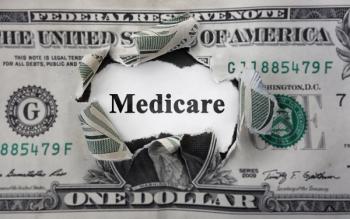
Emergency department admission rates vary widely among physicians, study finds
Key Takeaways
- Physician decision-making impacts ED admission rates, with high-admitting physicians not improving patient mortality outcomes.
- Study of 2.1 million VA ED visits found no correlation between admission rates and 30-day patient mortality.
Patients hospitalized by physicians with higher admission rates are likelier to be discharged within 24 hours but no less likely to die.
“Physicians, just like professionals in other domains, differ in their abilities and decisions, which has consequences for how much care you might receive, including, in this case, your likelihood of being hospitalized,” Dan Pham Ly, MD, PhD, MPP, assistant professor of medicine at the David Geffen School of Medicine at the University of California Los Angeles (UCLA), said in a
According to
“Some physicians may order more tests and hospitalize more of their patients, but this doesn’t appear to translate to better health,” said Ly, who co-authored the research with Stephen Coussens, a health economics and senior data scientist at the data management company, Abett. The findings will be published in the
The study analyzed
Admission rates varied greatly. Patients who saw high-admitting physicians, in the 90th percentile, were nearly twice as likely to be admitted as patients who saw low-admitting physicians, in the 10th percentile, despite no differences in their underlying health. The study found no correlation between a physician’s admission rate and patient mortality within 30 days of the ED visit. This trend persisted even when extended to mortality rates at seven days, 14 days, 90 days and one year.
These findings suggest that differences in physician decision-making, rather than patient health, are largely responsible for variations in ED admission rates.
“Our study is able to better account for patient differences and make apples-to-apples comparisons between physicians to demonstrate true differences in ED physician practice patterns and show that these differences do not translate to better patient health outcomes,” Ly said.
Implications for primary care
The study also has implications beyond emergency medicine, and into the field of primary care, since primary care physicians are often the first point of contact for patients experiencing non-emergency health issues. The ability of primary care physicians to coordinate care and provide outpatient management could help reduce unnecessary hospitalizations. With timely follow-ups and easier access to diagnostic resources, patients could turn to primary care and reduce their reliance on hospital admissions, particularly for
Newsletter
Stay informed and empowered with Medical Economics enewsletter, delivering expert insights, financial strategies, practice management tips and technology trends — tailored for today’s physicians.



















